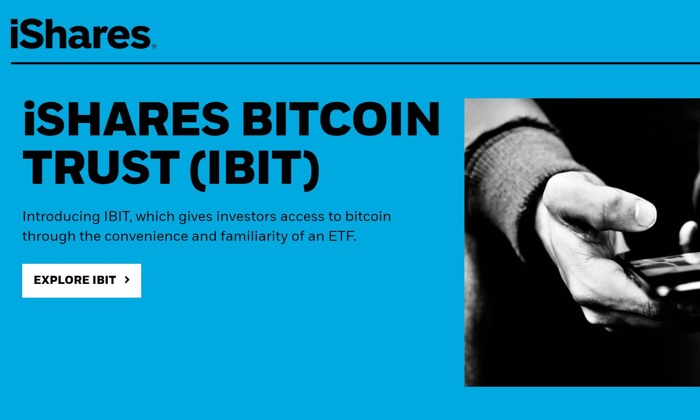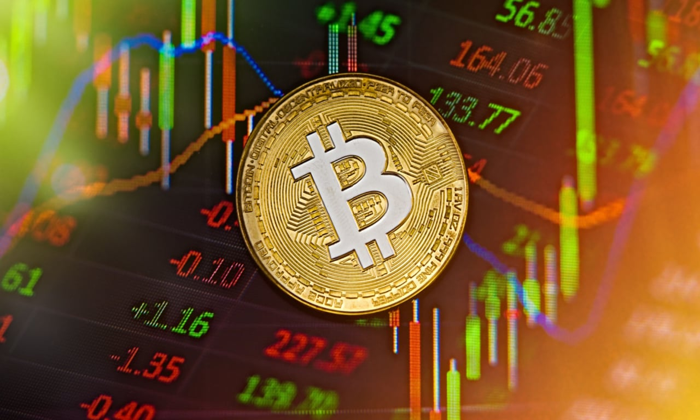The concept of the Gold Bitcoin Store of Value is gaining traction among investors, particularly as financial experts like Fidelity Macro Director Jurrien Timmer advocate for a 4:1 allocation favoring gold over Bitcoin. As both asset classes exhibit a convergence in their Sharpe ratios, the comparison between Bitcoin and gold becomes increasingly relevant for investment strategies in 2025. Investors are particularly interested in how cryptocurrencies can serve as a store of value alongside traditional assets, particularly in times of economic uncertainty. Recent market dynamics have shown that while Bitcoin has reclaimed significant price levels, gold continues to maintain its status as a stable investment. The interplay of these two assets highlights their complementary roles in portfolio construction, presenting a balanced approach to risk management and growth potential.
In the shifting landscape of asset allocation, the idea of utilizing gold and Bitcoin as reliable stores of value has become a focal point for many investors. The increasing attention on Bitcoin’s growth, particularly its recent resurgence in price, parallels the sustained strength of gold. As Jurrien Timmer’s insights illustrate, adopting a strategic blend of gold and digital currency can enhance long-term returns while mitigating volatility. This evolving investment landscape prompts a detailed look at the dynamics of traditional and contemporary assets, prompting investors to consider effective strategies that integrate both. The dialogue surrounding the comparison of gold and Bitcoin provides a fresh perspective on navigating the complexities of modern finance.
Fidelity Macro Director’s 4:1 Gold to Bitcoin Strategy
Jurrien Timmer, Fidelity’s Director of Global Macro, has put forth a compelling investment strategy recommending a 4:1 allocation towards gold compared to Bitcoin. This advisory stems from a notable convergence in the 52-week Sharpe ratios of both assets, which reflects their volatility and performance correlation. By investing four times more in gold than Bitcoin, Timmer argues that investors can achieve balanced exposure to these complementary assets while mitigating risk. This approach highlights how gold continues to maintain its status as a robust store of value even as Bitcoin exhibits significant growth, asserting its place in modern investment portfolios.
The rationale behind adopting a 4:1 ratio goes beyond mere numbers; it encapsulates a strategic vision for 2025 where investors seek to navigate through potential market uncertainties. As Bitcoin approaches the symbolic $100,000 mark, its alignment with gold’s historically low volatility offers a unique proposition, especially given the rising interest in cryptocurrency as a formidable contender in the investment landscape. Therefore, Timmer’s recommendation serves as a timely reminder to investors that a diversified portfolio not only cushions them against severe market fluctuations but also enhances overall gains.
Comparing the Sharpe Ratios: Gold vs. Bitcoin
A detailed comparison of the Sharpe ratios between gold and Bitcoin provides valuable insights for investors regarding their risk-adjusted performance. Currently, gold’s Sharpe ratio stands at a notably higher 1.33, while Bitcoin’s remains at a negative 0.40. This disparity indicates that, despite Bitcoin’s recent price rallies, it has not yet reached the reliability of gold as an investment. Investors keen on minimizing risk might thus favor gold, particularly in environments characterized by high volatility, ensuring a more stable return on investment.
Nevertheless, the ongoing convergence in Sharpe ratios suggests a potential shift where Bitcoin’s risk-adjusted performance could improve, making it a more attractive investment in the future. As retail holdings of Bitcoin diminish, and institutional interest grows, the narrative surrounding Bitcoin as a viable store of value becomes increasingly compelling. For strategists and financial advisors, this evolving landscape necessitates a careful consideration of historical data and emerging trends in forming robust investment strategies for the year 2025.
However, the volatility associated with Bitcoin highlights the need for seasoned investors to exercise caution, especially given regulatory uncertainties and liquidity risks that could prompt abrupt market shifts. Therefore, blending both gold and Bitcoin in a portfolio may serve to balance potential highs and lows while capitalizing on the unique benefits each asset presents.
Investment Strategies for 2025: A Focus on Diversification
As we approach 2025, investment strategies are increasingly leaning towards diversification to leverage potential market dynamics. The mixed allocation of gold and Bitcoin serves as a prime example of how investors can position themselves to navigate both traditional and emerging asset classes effectively. By maintaining a broader portfolio, investors not only hedge against inflation driven by traditional assets but simultaneously gain exposure to the growth potential offered by cryptocurrencies.
With Fidelity’s suggestion of a 4:1 gold-to-Bitcoin ratio, investors are encouraged to adopt a holistic investment outlook that considers macroeconomic factors and type of asset volatility. Blending these two asset classes creates a safety net during market downturns, while Bitcoin’s capacity for substantial appreciation offers significant upside potential. Such strategic asset allocation helps in optimizing returns tailored to individual investment goals, promoting resilience and yield in an evolving financial landscape.
Evaluating Bitcoin’s Price Trends in Relation to Gold
The interplay between Bitcoin and gold’s price dynamics has become a focal point for investors aiming to capitalize on market trends. Recent analyses indicate that Bitcoin rebounded significantly, nearing the $103,600 mark, following its own historical lows earlier in the year. In contrast, gold has consistently demonstrated strength with prices hovering around $3,213 per ounce, which has further solidified its historical appeal as a safe haven during tumultuous times. This narrative positions gold as a reliable cornerstone in a portfolio while captivating market interest toward Bitcoin’s resurgence.
Understanding these price trajectories not only aids in crafting strategic investments but also emphasizes the psychological attributes influencing market sentiment. The current market environment, where both Bitcoin and gold are solidifying their respective positions, showcases an intriguing opportunity for investors to assess how price actions of these asset classes affect each other. As they draw potential investors, the very nature of their volatility calls for a nuanced approach in interpreting signals to optimize returns.
Navigating Risks: Bitcoin’s Volatility Concerns
Despite promising prospects, Bitcoin’s market volatility raises several concerns among investors. One of the critical risks highlighted is Bitcoin’s negative Sharpe ratio, which denotes high volatility and uncertainty associated with returns. This negative performance underlines the need for potential investors to acknowledge regulatory risks and liquidity issues that could widen the performance gap with gold. These uncertainties present a stark reminder necessitating that investors remain alert to the shifting landscape of cryptocurrencies and their impact on long-term value.
Market participants, especially those new to cryptocurrency investing, need to navigate carefully around these risks. By ensuring that adequate research and risk management protocols are in place, investors can confidently explore crypto while being grounded in the historical reliability traditionally offered by gold. Ultimately, securing a tactical balance between both assets could serve to mitigate further potential losses, fostering a safer investment avenue moving into 2025.
Regulatory Impact on Cryptocurrency Investment
As the cryptocurrency market continues to evolve, regulatory frameworks have emerged as a significant driving force affecting investor sentiment and market stability. Recent discussions surrounding Bitcoin and broader digital assets highlight the likelihood of facing intensified scrutiny and regulations. Such oversight impacts liquidity and trading practices, consequently influencing their attractiveness compared to traditional assets like gold. Investors are urged to consider these regulatory dimensions when constructing their portfolios to ensure compliance and mitigate any potential adverse effects.
Investment strategies that incorporate an understanding of regulatory trends tend to be more robust against unforeseen shocks. Investors who monitor these developments will be adequately positioned to capitalize on dynamic shifts within the crypto space while maintaining a vigilant approach towards their gold holdings. This proactive management will be essential in determining how assets correlate and in avoiding pitfalls associated with regulatory hurdles as the market continues to mature.
The Future of Gold and Bitcoin: Complementary Assets
In envisioning the future of investment portfolios, positioning gold and Bitcoin as complementary assets may become increasingly advantageous. Timmer’s insights resonate with an evolving perspective where traditional and digital assets enrich each other rather than compete. As inflationary pressures mount, gold’s status as a time-tested store of value is reinforced, while Bitcoin’s digital nature provides numerous opportunities for asymmetric returns. This symbiotic relationship fosters a balanced investment landscape, encouraging investors to embrace both assets for a diversified strategy.
As we move toward 2025, the narrative surrounding these assets will likely transform further, with institutional participation playing a crucial role in market acceptance and understanding. Enhanced awareness of Bitcoin’s potential, alongside gold’s historical appeal, sets the stage for informed investment strategies that leverage the strengths of each asset class. Consequently, portfolio allocations that emphasize both gold and Bitcoin could emerge as a definitive approach to combat economic uncertainty while maximizing potential upsides.
Tech-Driven Trends in Cryptocurrency and Gold Investments
Emerging technology continuously alters the investment landscape, particularly for cryptocurrencies and traditional assets like gold. The fusion of advanced analytics and real-time data is reshaping how investors approach gold and Bitcoin. Tools that analyze market sentiment, volatility, and performance metrics allow investors to make more informed decisions and develop refined strategies that account for both market fluctuations and external economic indicators. In a rapidly evolving market, leveraging technology can yield significant advantages for those engaged in these asset classes.
Additionally, the advent of blockchain technology illustrates a growing demand for transparency and security in investment transactions. This shift not only elevates Bitcoin’s appeal as a digital store of value but also affects how gold is procured and traded. As firms integrate these technological advancements into their trading practices, the efficiency and accessibility of investing in both assets will likely improve, enticing a broader audience to explore their potential.
Frequently Asked Questions
How does the Fidelity Macro Director view the Gold Bitcoin Store of Value in terms of investment strategies for 2025?
Fidelity Macro Director Jurrien Timmer recommends a 4:1 allocation, favoring gold over Bitcoin, suggesting that this ratio balances the historical volatility and performance of both assets. With Bitcoin’s Sharpe ratio converging with gold’s, this strategy is positioned to enhance risk-adjusted returns in investment strategies for 2025.
What is the significance of the Sharpe ratio in comparing Gold and Bitcoin as stores of value?
The Sharpe ratio is crucial for assessing the risk-adjusted performance of investments. As of May 16, 2025, gold’s Sharpe ratio is 1.33 and Bitcoin’s is -0.40, indicating that while gold is providing a stable store of value, Bitcoin’s potential is approaching gold’s level. This convergence suggests that investors may want to consider both assets in their store of value strategy.
Why is Bitcoin seen as a complementary store of value to gold according to recent analyses?
Recent analyses indicate that Bitcoin and gold can function as complementary stores of value rather than competitors. The 4:1 allocation recommended by Fidelity reflects this complementary relationship, allowing investors to hedge inflation while participating in the upside potential of the digital asset market.
How has the performance of gold and Bitcoin influenced investment preferences regarding their roles as stores of value?
Gold has experienced significant gains, outperforming Bitcoin recently; however, Bitcoin’s recovery above $100,000 and its converging volatility with gold could shift investor sentiments. This dynamic interplay informs how investors view their roles as stores of value, prompting considerations for tactical rebalancing between the two assets.
Can the 4:1 gold to Bitcoin allocation impact long-term portfolio construction focused on store of value?
Yes, a 4:1 allocation can enhance long-term portfolio construction by tempering Bitcoin’s drawdowns while retaining the growth potential of this digital asset. This blended strategy allows investors to manage risks effectively while benefiting from the characteristics of both gold and Bitcoin as complementary stores of value.
What risks should investors consider when evaluating Bitcoin as a store of value compared to gold?
Investors should be aware of Bitcoin’s negative Sharpe ratio, indicating potential risk. Regulatory changes and market liquidity can exacerbate volatility, making Bitcoin a riskier store of value compared to the more stable performance of gold. Therefore, a balanced approach using the 4:1 ratio can help navigate these risks.
How have Bitcoin ETFs influenced the perception of Bitcoin as a store of value in 2025?
The recent rebound of Bitcoin ETFs, with significant inflows, indicates growing institutional interest and confidence in Bitcoin as a store of value. This trend, alongside the performance data showing Bitcoin’s potential convergence with gold, supports the narrative of Bitcoin becoming an integral part of a diversified investment strategy centered on value preservation.
What should investors understand about the relationship between Bitcoin and gold in the context of inflation?
Investors should recognize that both Bitcoin and gold serve as potential hedges against inflation, with the 4:1 allocation strategy allowing them to balance stability and growth. This relationship emphasizes their coexistence as stores of value, with gold providing a stable base and Bitcoin offering the possibility of higher returns.
| Key Points | Details |
|---|---|
| Fidelity’s Recommendation | 4 parts gold to 1 part Bitcoin for optimal holdings. |
| Market Trends | Retail Bitcoin holdings decreased to 17%, with wealthier entities taking the lead in ownership. |
| Bitcoin and Gold Prices | Bitcoin at approximately $103,600, Gold at approximately $3,213 per oz as of May 16, 2025. |
| Sharpe Ratios | Gold’s 52-week Sharpe ratio at 1.33; Bitcoin’s at -0.40, indicating higher risk-adjusted performance for gold. |
| Investment Strategy | The 4:1 ratio highlights the complementary nature of both assets as stores of value. |
| Market Dynamics | Potential for tactical rebalancing if Bitcoin’s metrics improve and gold trends soften. |
| Risks Consideration | Bitcoin’s negative Sharpe ratio indicates risks; regulatory actions could affect performance. |
Summary
Gold Bitcoin Store of Value is becoming increasingly relevant as Fidelity’s Macro Director recommends a 4:1 allocation towards gold compared to Bitcoin to balance risks and returns. Recent market analysis shows a convergence in performance metrics between gold and Bitcoin, suggesting that while gold remains a more stable store of value, Bitcoin is gaining traction. This strategic allocation aims to mitigate volatility while harnessing the potential growth in the crypto market, making it a compelling approach for investors looking to diversify their portfolios.
In recent discussions led by Fidelity Macro Director Jurrien Timmer, the concept of a Gold Bitcoin Store of Value is increasingly gaining traction as a compelling investment strategy. With the price of Bitcoin soaring past $100,000, and a notable convergence of its 52-week Sharpe ratio with gold, investors are looking at this pairing critically. The 4:1 ratio recommended by Timmer emphasizes the importance of balancing traditional assets like gold with emerging cryptocurrencies like Bitcoin. This strategy not only aims to optimize returns but also to mitigate risks associated with market volatility. As both assets showcase their prowess as stores of value, understanding the Bitcoin and gold comparison becomes crucial for developing effective investment strategies for 2025 and beyond.
The dynamic interplay between precious metals and digital currencies is reshaping how we view asset allocation. As we engage in the Bitcoin and gold debate, it’s essential to examine the nuances that make them both valuable and complementary as investment vehicles. Investors are increasingly recognizing cryptocurrencies as a viable alternative to traditional stores of value, akin to gold. In this context, the application of investment strategies focused on the evolving financial landscape of 2025 becomes necessary. By evaluating metrics like the Sharpe ratio, stakeholders can better balance their portfolios, harmonizing the potential of cryptocurrency alongside well-established commodities.















